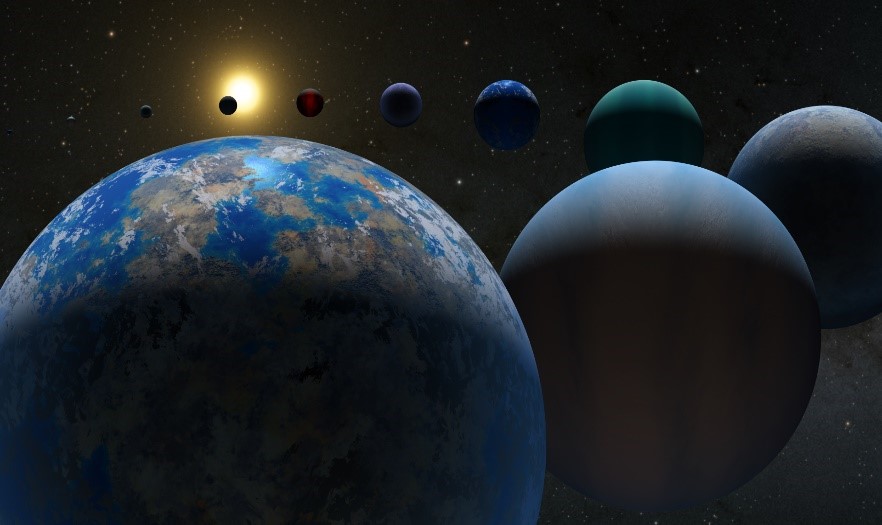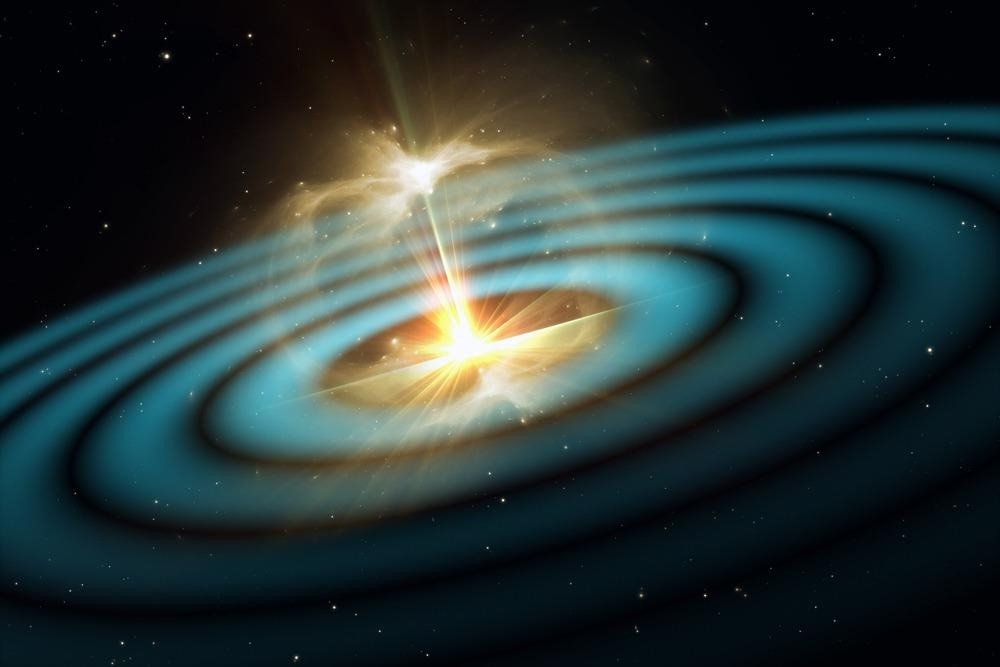Eyes to the Sky: Next-Generation Telescopes
NASA has a long and rich tradition of designing, developing, and flying space telescopes that serve the international astronomy and astrophysics community. Especially important have been the Great Observatories—the Compton Gamma-Ray Observatory, the Chandra X-ray Observatory, the Hubble Space Telescope, and the Spitzer Space Telescope—which gave us cosmic eyes in the gamma-ray, x-ray, ultraviolet, visible, and infrared ranges of wavelengths. The Great Observatories have a brilliant track record of delivering paradigm-shifting answers to age-old questions about our cosmos.[1]

Figure 1. Eyes to the Sky: Next-Generation Telescopes
Eyes to the Sky: Next-Generation Telescopes is shown in Figure 1. As currently conceived, the Next Generation Space Telescope will have a reflecting mirror 6 meters in diameter,with almost three times the diameter and seven times the collecting area of the mirror of the Hubble Space Telescope (HST). Equipped with detectors far more sensitive than those on the HST, the NGST will surpass by 10 times the HST's ability to detect radiation from faint sources. But even more important, the NGST will maintain itself at a temperature much colder than the HST's-only 50 degrees above absolute zero.
By doing so,the NGST will observe the cosmos throughout large portions of the infrared spectral domain at sensitivities thousands of times that of any previous telescope. Redshift (the stretching of light by the expansion of the universe) moves the wavelengths of stars at a distance of 10 billion light-years from the visible into the high-sensitivity range of NGST. Thus NGST's capability to make super-sensitive infrared observations will enable it to see galaxies as they were 10 billion years ago in the first moments of their creation.[2]
We turn our gaze upwards to the horizon of technological innovation that is poised to reshape our understanding of the cosmos. Next-generation telescopes are on the brink of revolutionizing astronomy, offering unprecedented insights into the universe's most elusive mysteries.
The James Webb Space Telescope (JWST): A Window to the Early Universe
- Explore the JWST's capabilities and its anticipated launch into space.
- Highlight how its infrared capabilities will allow us to peer through cosmic dust and observe the formation of galaxies, stars, and planetary systems.
- Discuss the potential for discovering the atmospheres of exoplanets and providing clues about their habitability.
Extremely Large Telescopes (ELTs): Unveiling Distant Worlds
- Introduce the concept of ELTs and their enormous light-gathering power.
- Discuss the European Extremely Large Telescope (E-ELT) and the Giant Magellan Telescope (GMT) as examples.
- Explore their potential to capture high-resolution images of exoplanets and study their atmospheres.
The Square Kilometre Array (SKA): Listening to the Cosmos
- Explain the SKA's role in radio astronomy and its innovative design spanning multiple continents.
- Discuss its ability to probe cosmic magnetism, dark matter, and the early universe.
- Highlight how the SKA will help us better understand the evolution of galaxies and the cosmic web.
High-Energy Observatories: Gamma Rays and Beyond
- Introduce gamma-ray observatories like the Cherenkov Telescope Array (CTA).
- Explain how these telescopes detect high-energy phenomena, including gamma-ray bursts and cosmic rays.
- Discuss the potential for uncovering the nature of dark matter and other exotic particles.
Synoptic Sky Surveys: Mapping the Dynamic Universe
- Explore the concept of synoptic surveys and their role in monitoring the changing sky.
- Highlight projects like the Large Synoptic Survey Telescope (LSST) and its vast data collection capabilities.
- Discuss how these surveys contribute to the study of transient events, variable stars, and the overall evolution of the universe.
Conclusion:
The future of astronomy is undoubtedly bright with the promise of these next-generation telescopes. As technology continues to advance, these cosmic observatories will grant us unparalleled glimpses into the universe's past, present, and future. By expanding our vision beyond the visible spectrum and venturing into uncharted territories, these telescopes will enrich our understanding of everything from the birth of galaxies to the search for extraterrestrial life. Stay tuned for the next installment in our series, where we'll continue to explore the exciting frontiers of astronomical discovery.
References:
- https://www.americanscientist.org/article/nasas-next-great-eye-on-the-sky
- https://nap.nationalacademies.org/resource/aanm/web/tier3text/ngst.htm
Cite this article:
Gokula Nandhini K (2023), The Future of Astronomy: Advancements and Discoveries, AnaTechmaz, pp.1





